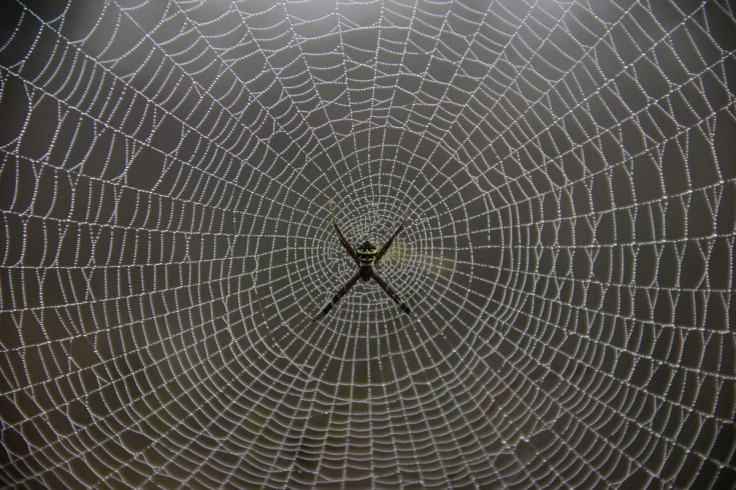Scientists Discover How Spiders Communicate Through Webs

Spiders tune their silk to specific frequencies to communicate information about prey, mates and the structural integrity of the web, believe scientists.
Scientists from the universities of Oxford, Strathclyde and Sheffield tested the effect of soundwaves and high velocity impact on spiders' silk, using tiny cameras and laser monitors.
They found that the silk was able to transmit different types of soundwave, allowing the spiders to communicate different types of message, and perform different kinds of task.
The spiders are able to pick up on the nanometre scale vibrations using organs on their legs called slit senillae, which look like small grooves on their exoskeleton.
In order to test the sonic properties of the silk, the team extracted silk from spiders through a process known as "forced silking", which involves using a motorised reel to extract silk from restrained spiders.
They then mounted the silk on frames, in order to be able to study the effect of sound on strands in isolation from the complex structure of a spider's web.
They discovered that the vibrations that travelled perpendicular to the silk string had different properties to those that travelled along the silk fibre axis.
"This has important implications for what the spider uses the different wave types for," Beth Mortimer from the Oxford Silk Group at Oxford University, who led the research, told Wired.
"Where one type is used for monitoring the web and the other for information on caught prey," she told said.
Spiders have been observed "tuning" webs, so they can convey the information they want, said the team.
The garden cross spider Araneus diadematus, after finishing building a web, "turns around on the hub and pulls at each radial thread in some sort of sequence; in response to what she 'feels' she often readjusts a tension by reconnecting the thread to the hub mesh," explained Professor Fritz Vollrath, also from the Oxford Silk Group.
"This very clearly is a process of tuning of the overall web tensions, which affects how signal is transmitted.
"These findings further demonstrate the outstanding properties of many spider silks that are able to combine exceptional toughness with the ability to transfer delicate information," said Vollrath.
He added that practical applications of the spider research may include intelligent sensors and actuators, which react to heat, light, sound, motion or touch.
© Copyright IBTimes 2025. All rights reserved.






















